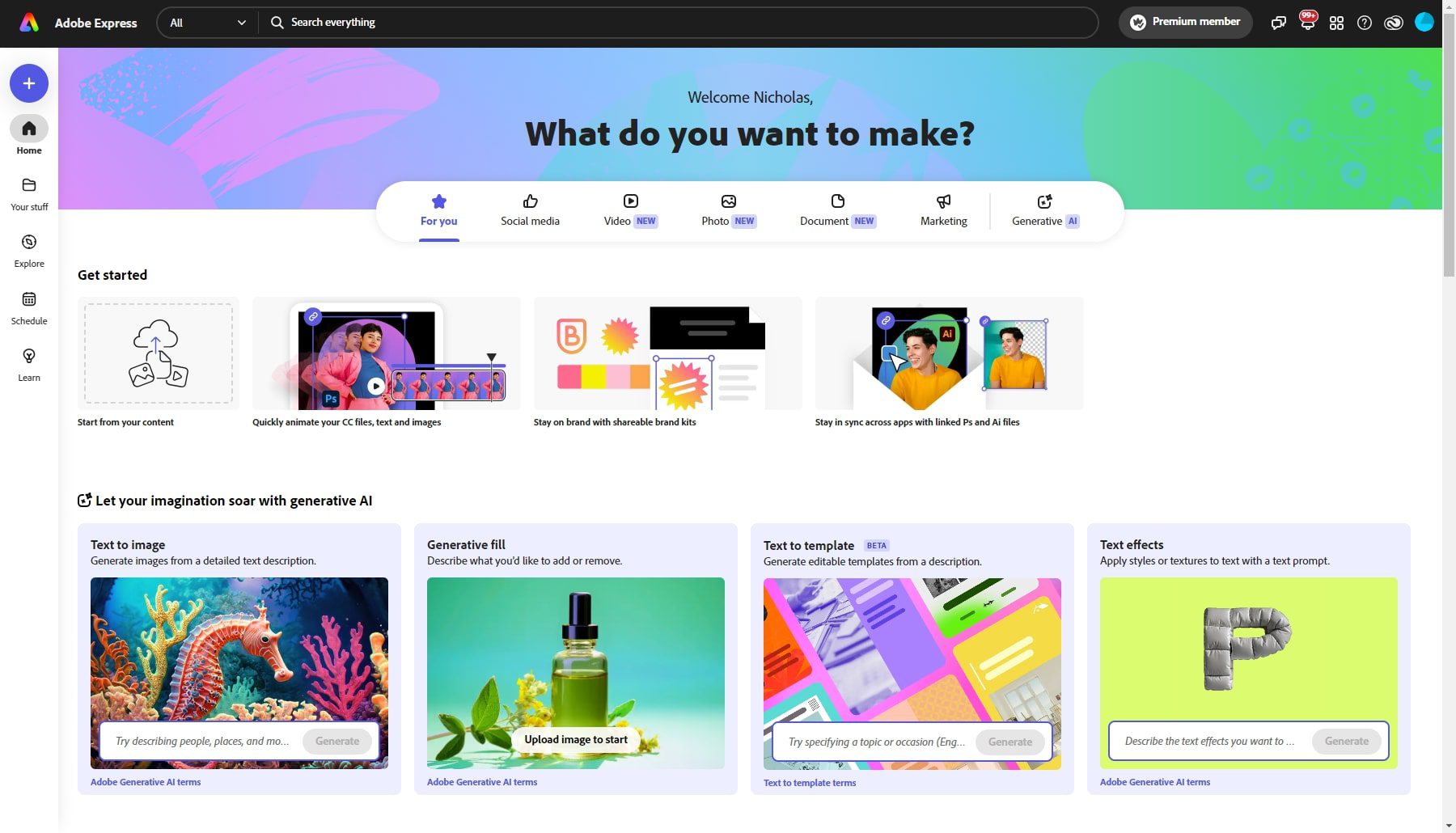Adobe Express Brand Kit: Complete Buyer's Guide
Enterprise-focused solution bridging generative AI with Creative Cloud integration
Adobe Express Brand Kit represents Adobe's strategic entry into the AI-powered brand management market, positioning itself as an enterprise-focused solution that bridges generative AI capabilities with Creative Cloud ecosystem integration.
Market Position & Maturity
Market Standing
Adobe Express Brand Kit occupies a 'Challenger' position in AI design tools [53], leveraging Adobe's established Creative Cloud ecosystem to compete against pure-play AI design startups and template-focused platforms.
Company Maturity
Adobe's market maturity stems from decades of creative software leadership, with Creative Cloud serving millions of professional users globally, providing a stable foundation for AI tool expansion.
Growth Trajectory
Market validation comes through documented enterprise customer adoption including Prudential Financial, Dentsu, and Owen Jones Agency [55][56][57], demonstrating traction beyond Adobe's existing customer base.
Industry Recognition
Industry recognition includes integration partnerships with major enterprise platforms like HubSpot and Workfront [46][49][56], indicating market acceptance among business technology vendors.
Strategic Partnerships
Integration partnerships with major enterprise platforms like HubSpot and Workfront [46][49][56].
Longevity Assessment
Adobe's $17.6 billion annual revenue and established enterprise relationships provide buyer confidence in long-term viability that smaller AI startups cannot match.
Proof of Capabilities
Customer Evidence
Prudential Financial achieved measurable business transformation through Adobe Express implementation, documenting 1.24x ROI on campaign investments alongside 365% year-over-year engagement growth and 94% positive media sentiment [57][58].
Quantified Outcomes
Dentsu reported 70% acceleration in time-to-market by enabling non-designers to create branded content through Adobe Express workflows [56].
Case Study Analysis
Owen Jones Agency eliminated localization bottlenecks by reducing timeline requirements from weeks to days through Adobe Express's in-app translation features and template automation [55].
Market Validation
Enterprise adoption patterns show successful implementations across regulated industries including financial services (Prudential) and healthcare (Spring Health), indicating platform maturity for compliance-driven environments.
Competitive Wins
Competitive displacement evidence shows wins against template-focused competitors in enterprise environments requiring brand governance.
Reference Customers
Enterprise customers include Prudential Financial, Dentsu, and Owen Jones Agency [55][56][57].
AI Technology
Adobe Express Brand Kit leverages Firefly-powered generative AI across three core technological areas that address enterprise brand management challenges [39].
Architecture
The platform's technical architecture prioritizes commercial safety through licensed content training, providing legal indemnification that distinguishes it from competitors using unlicensed training data [49][58].
Primary Competitors
Primary competitors include Canva for enterprise collaboration, Looka for vector editing capabilities, and Design Free Logo Online for multilingual support [47][53][54].
Competitive Advantages
Competitive advantages center on commercial indemnification through licensed content training [49][58], addressing legal risks that affect competitor adoption in regulated industries.
Market Positioning
Market positioning as a 'Challenger' in AI design tools [53] reflects Adobe's strategy of targeting enterprise governance requirements rather than maximum creative flexibility.
Win/Loss Scenarios
Win/loss scenarios show Adobe Express succeeding when Creative Cloud integration, brand governance requirements, and compliance needs outweigh limitations in design flexibility.
Key Features

Pros & Cons
Use Cases
Integrations
Pricing
Featured In Articles
Comprehensive analysis of AI Brand Kit Creators for AI Design for AI Design professionals. Expert evaluation of features, pricing, and implementation.
How We Researched This Guide
About This Guide: This comprehensive analysis is based on extensive competitive intelligence and real-world implementation data from leading AI vendors. StayModern updates this guide quarterly to reflect market developments and vendor performance changes.
58+ verified sources per analysis including official documentation, customer reviews, analyst reports, and industry publications.
- • Vendor documentation & whitepapers
- • Customer testimonials & case studies
- • Third-party analyst assessments
- • Industry benchmarking reports
Standardized assessment framework across 8 key dimensions for objective comparison.
- • Technology capabilities & architecture
- • Market position & customer evidence
- • Implementation experience & support
- • Pricing value & competitive position
Research is refreshed every 90 days to capture market changes and new vendor capabilities.
- • New product releases & features
- • Market positioning changes
- • Customer feedback integration
- • Competitive landscape shifts
Every claim is source-linked with direct citations to original materials for verification.
- • Clickable citation links
- • Original source attribution
- • Date stamps for currency
- • Quality score validation
Analysis follows systematic research protocols with consistent evaluation frameworks.
- • Standardized assessment criteria
- • Multi-source verification process
- • Consistent evaluation methodology
- • Quality assurance protocols
Buyer-focused analysis with transparent methodology and factual accuracy commitment.
- • Objective comparative analysis
- • Transparent research methodology
- • Factual accuracy commitment
- • Continuous quality improvement
Quality Commitment: If you find any inaccuracies in our analysis on this page, please contact us at research@staymodern.ai. We're committed to maintaining the highest standards of research integrity and will investigate and correct any issues promptly.